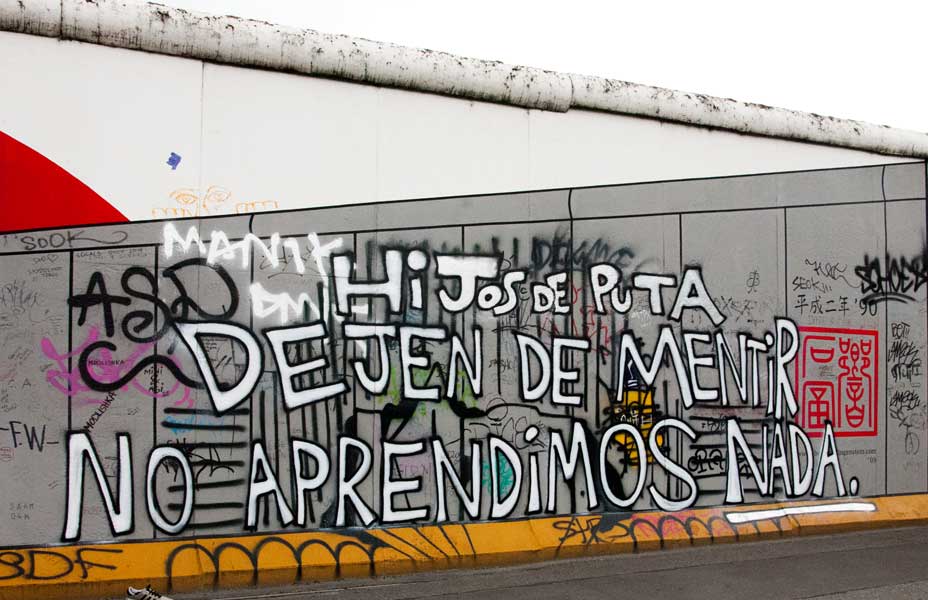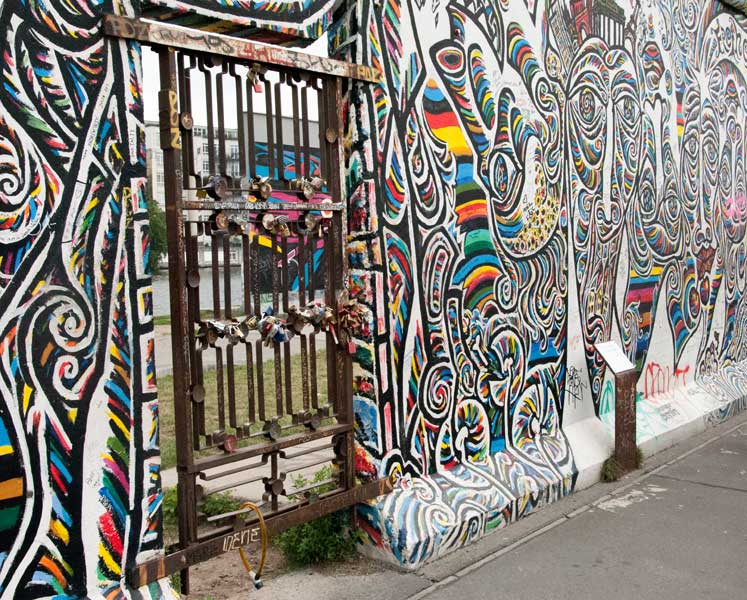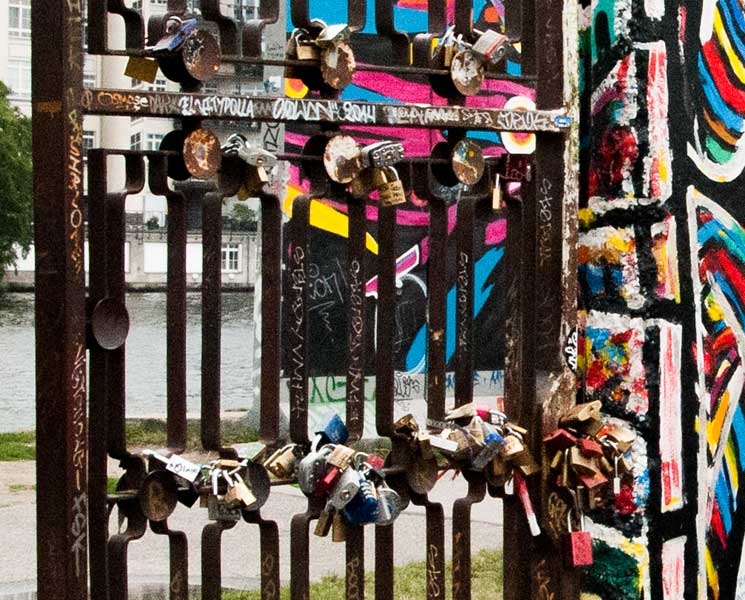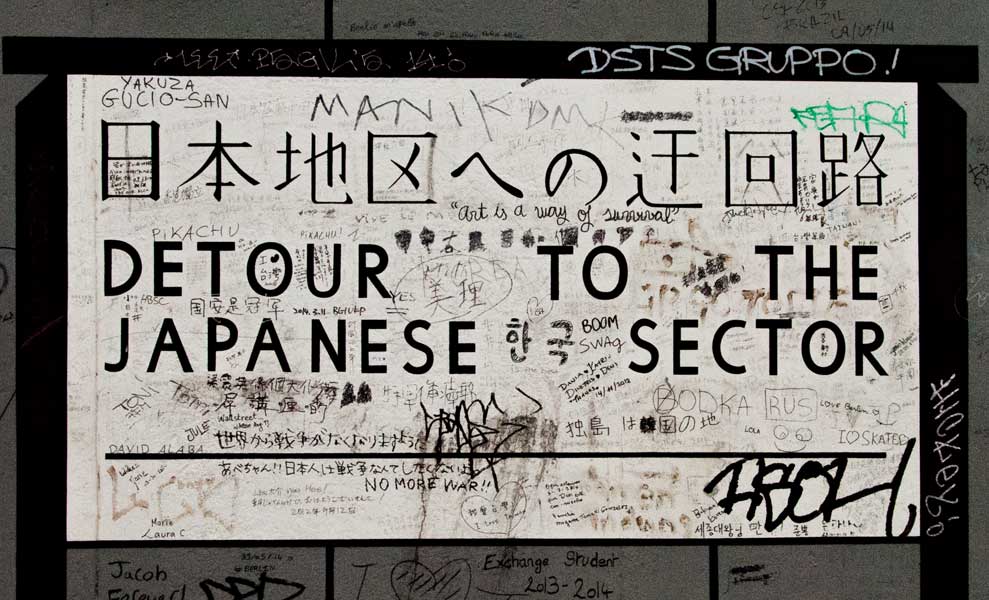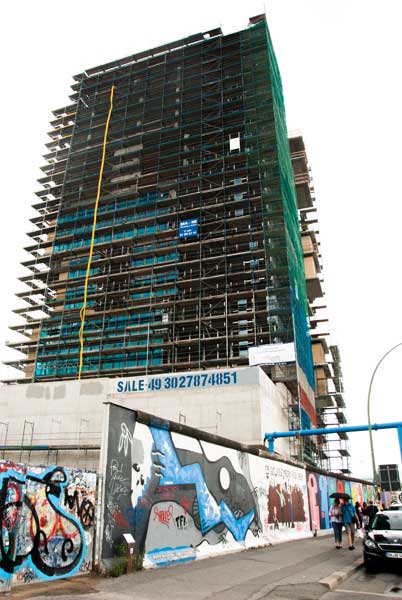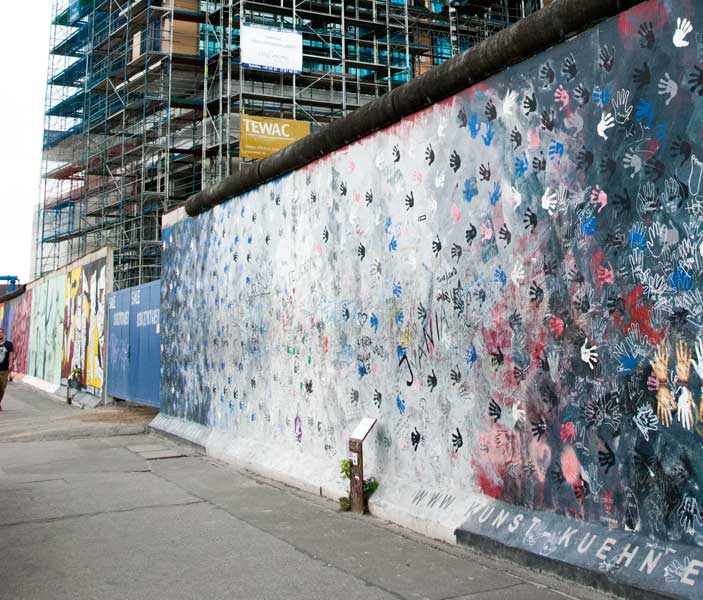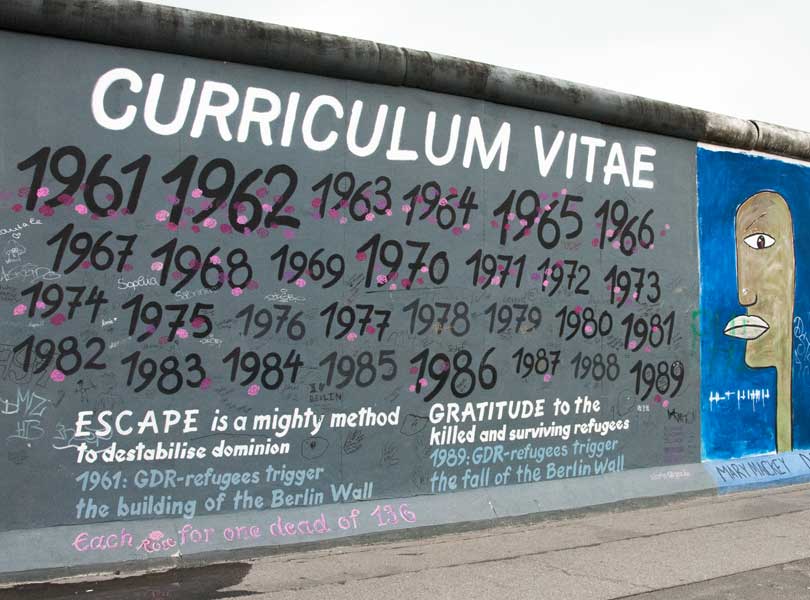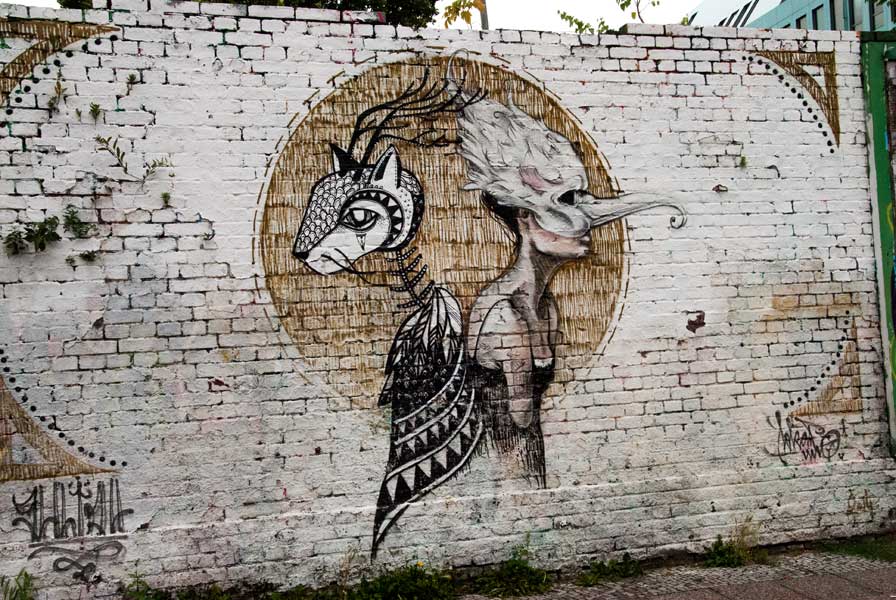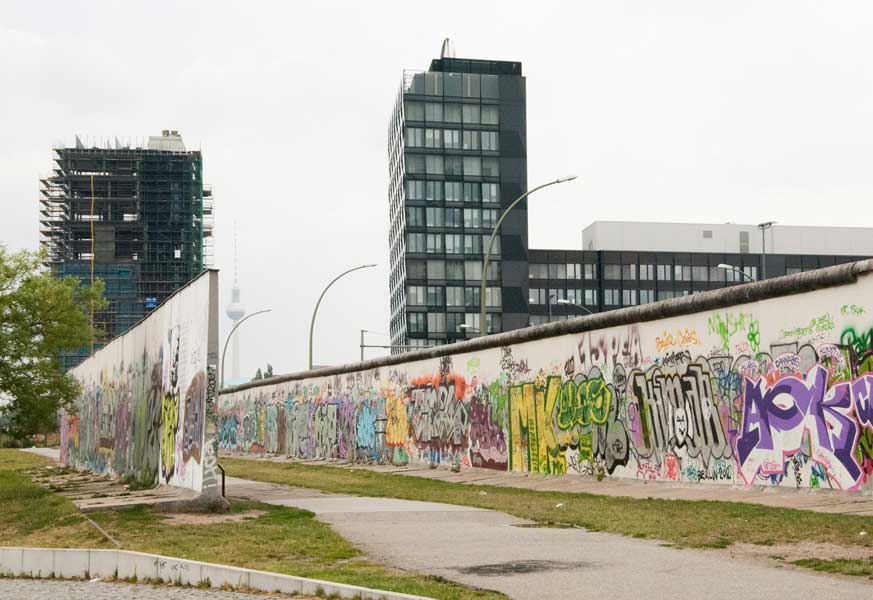
Berlin Wall: East Side Gallery
I'm not an expert on The Wall and I find, now that I have seen a bit of it and traced it on the map of Berlin, that I had been labouring under a lot of misconceptions. I sort of saw it as part of the continuous border between East and West Germany, though a moment's thought would show that this could not have been the case, as Berlin was an island/enclave in the heart of East Germany and not on its border with the west. I must have been thinking ideologically rather than geographically.
Tracing it also brings home to you that it does not follow a smooth line or curve. For much of its trajectory it ducks in and out of side streets and in some places it was the buildings themselves that formed the wall.
Even in today's united Germany, it is necessary to think in terms of east and west as the legacy of the split still remains strong. It is worth bearing the following in mind. After WWII Germany was split down the middle with the Soviets occupying the eastern half and the allies (USA, UK, France) occupying the western half. Berlin, an island in the middle of the eastern half, was similarly split. The eastern sector was open to the surrounding countryside as both areas were Soviet controlled. The western sector was supposed to be hermetically sealed off from the surrounding countryside and the eastern sector of the city. In general West Germans were permitted to visit East Berlin while East Germans were not permitted to visit the west.
In the 16 years following the end of WWII, East Germany experienced an exodus/brain-drain to the west. The borders were porous and the existence of the East German State itself was threatened by the loss of brains and skilled manpower. As the main east/west border was tightened up over those years the exodus became increasingly concentrated on Berlin where the border between the eastern and western sectors was more open.
This state of affairs was not sustainable for East Germany and in 1961 the Berlin east/west border was closed and a wall was built around the perimeter of the western sectors. It's stated purpose was to keep the West German fascists out of East Germany but its real purpose was to stem the east/west exodus. The wall became redundant in 1989 when both Czechoslovakia and Hungary opened their borders to East Germans wishing to access the west.
So my first priority, on arrival in Berlin was to see what remained of The Wall. I had been very conscious of The Wall since its construction and the German embassy in Dublin kept up a sustained publicity campaign to make people aware of it and of the general east/west border. This border clearly resonated with Irish people in the context of our own border with Northern Ireland. However, there was one major difference. The German borders included watchtowers manned by East German soldiers with orders to shoot to kill.
Tracing it also brings home to you that it does not follow a smooth line or curve. For much of its trajectory it ducks in and out of side streets and in some places it was the buildings themselves that formed the wall.
Even in today's united Germany, it is necessary to think in terms of east and west as the legacy of the split still remains strong. It is worth bearing the following in mind. After WWII Germany was split down the middle with the Soviets occupying the eastern half and the allies (USA, UK, France) occupying the western half. Berlin, an island in the middle of the eastern half, was similarly split. The eastern sector was open to the surrounding countryside as both areas were Soviet controlled. The western sector was supposed to be hermetically sealed off from the surrounding countryside and the eastern sector of the city. In general West Germans were permitted to visit East Berlin while East Germans were not permitted to visit the west.
In the 16 years following the end of WWII, East Germany experienced an exodus/brain-drain to the west. The borders were porous and the existence of the East German State itself was threatened by the loss of brains and skilled manpower. As the main east/west border was tightened up over those years the exodus became increasingly concentrated on Berlin where the border between the eastern and western sectors was more open.
This state of affairs was not sustainable for East Germany and in 1961 the Berlin east/west border was closed and a wall was built around the perimeter of the western sectors. It's stated purpose was to keep the West German fascists out of East Germany but its real purpose was to stem the east/west exodus. The wall became redundant in 1989 when both Czechoslovakia and Hungary opened their borders to East Germans wishing to access the west.
So my first priority, on arrival in Berlin was to see what remained of The Wall. I had been very conscious of The Wall since its construction and the German embassy in Dublin kept up a sustained publicity campaign to make people aware of it and of the general east/west border. This border clearly resonated with Irish people in the context of our own border with Northern Ireland. However, there was one major difference. The German borders included watchtowers manned by East German soldiers with orders to shoot to kill.
